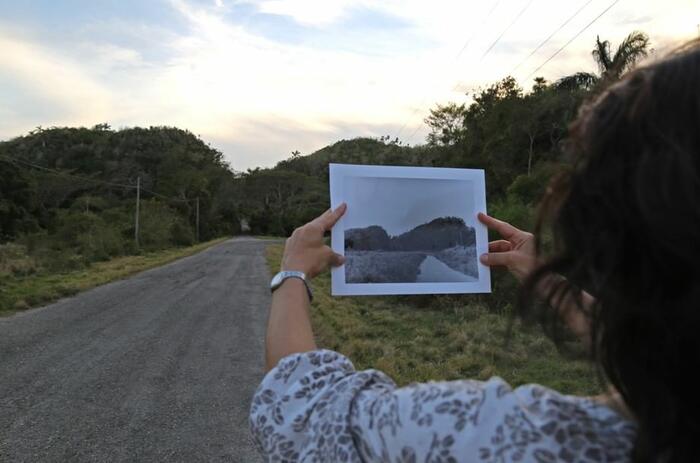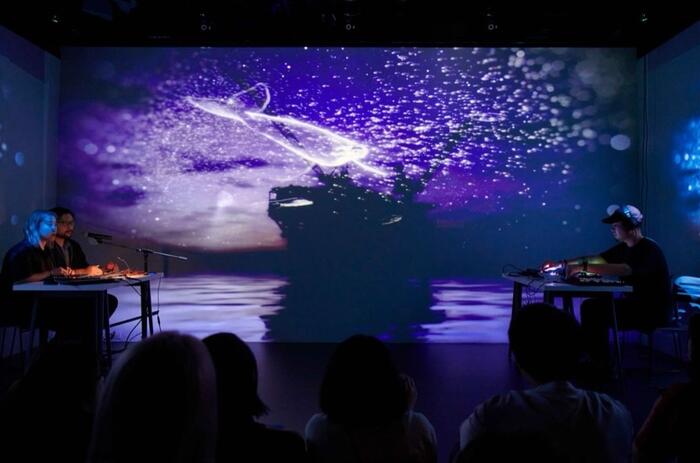GESTURES, TRACES AND FORMS
Carlier | Gebauer, Berlin, presented the group exhibition I opened the Curtain to See What Lays Behind, including works by Juliana Cerqueira Leite, Asta Gröting, Lexia Hachtmann, Pakui Hardware, Laura Lima, Lúcia Koch, Joanna Piotrowska, Guga Szabzon, Tiago Tebet and Ian Waelder.

I Opened the Curtain to See What Lays Behind explores human gestures and their traces, their forms and their meanings. Beyond thegesture itself, where does it lead us? And in what ways do different gestures take shape andmeanings and circulate in the spaces between us? They speak of a shared meaning, building abridge communicating between several entities. And still a gesture can be a sign, a symbol, a form, an invitation, ubiquitous but singular, ephemeral and at the same time bound to thebody by which it is produced. Once the hand is removed, the gesture becomes absent, hintingtowards a prior intention. The works in the group show propose the idea of art and its makingas an absent gesture, a touch that opens but never reveals its meaning entirely. Althoughseemingly familiar, gestures are nonetheless easily rendered into the absurd, the uncanny,the enigmatic.
In Joanna Piotrowska’s photographs the subjects face away from the camera, their emotions expressed in their body language. The depicted gestures themselves - pointing, lifting, clasping hands – are not fully legible and evade the viewers. Within the tension of the familiar and the illegible an ambiguity arises, offering a moment of contemplation and speculation upon their meanings.
Juliana Cerqueira Leite’s work examines the familiar as well, focusing on its everyday qualities. She studies ordinary to almost unconscious movements, translating them into marks on paper. Leite’s drawings appear as gestures in the making, repeating themselves until exceeding their origin.
Astra Gröting’s video The First Drink shows the artist’s friends and family preparing their first drink in the morning. Each hand movement has been perfected over the years and builds up to a routine in which the movements unfold almost automatically, with little conscious effort. A bodily manifestation of psychological processes, the first drink materializes human habits. In TOUCH Gröting stages a gestural encounter between the artist and fourteen individuals, portraying them by exploring their faces directly with her hands.
Lexia Hachtmann’s inquiry into the fabrication of human relationships likewise takes departure from these charged in-between spaces. Her paintings are snapshots, suspended in time, their subjects lost in a shared intimacy, ecstatic and yet enraptured. Their gazes and gestures are reminiscent of a desire for touching, looking, immersing.
In Ian Waelder’s work Stain & repair (Handle with care) gestures of care and gentle traces of intimacy are intertwined. Within these two layers Waelder is referencing universal questions about care while also reflecting upon his own family history. This work revolves around the model of Opel Olympia from 1935, which Waelder’s grandfather had to sell in order to enable his escape from Nazi Germany. This car is depicted in both parts of diptych, one image taken from its manual and the other being a still from a film from Truffaut, where a couple is kissing in view of the car.
The felt pieces by Guga Szabon provide hints, mapping the joint movements of the human hand and sewing machine. Their compositions reflect these dialogical processes, cartographing the speed of the sewing machine moving over the felt. Evoking simultaneously dreamy landscapes, maps full of symbolisms and questions these works are presenting a maze of meanings.
In his paintings Tiago Tebet layers several stages of interactions, from deconstructing previously existing canvases by cutting and tearing, to rearranging them by sewing new shapes together, twisting them and applying pigment to their surface. These layers of interaction create floral shapes of bold colors on their surface, lavishing out beyond the canvas.
Laura Lima employs in her sculptural works a heterogeneity of materials. Industrially fabricated ready-mades, their polished surfaces almost devote of every human touch as well as raw materials only treated with food dye, keeping the visible human impact to a minimum. Removing the human from the objects, these works are at first entangled in an opposition of the crafted and the natural, only to ultimately break it up. For the series The Host Pakui Hardware, the artist examines an aesthetic dimension of medical care. The hand of the doctor and its mechanical extensions intervene in the body of the patient, examining, squeezing, cutting, sewing, leaving marks and scars. Pakui Hardware’s sculptures reflect this intricate relationship and translate it into the material.
Lúcia Koch’s pieces are devices for communication as well as a metaphor for the very same process. Her installation induces the nature of the communication between two or more persons, asking how it plays out on a bodily and relational level. What do we reveal when encountering an Other, what do we hold back, what holds us back? Employing light as her material, the sculptural work of Lúcia Koch is highly kinetic and participative, undulating and changing according to the points of view, the number of superimposed layers, the hours of the day, the quality and direction of the sunlight.
Juliana Cerqueira Leite (b. 1981 in Brazil), lives and works in New York; Asta Gröting (b. 1961 in Herford) lives and works in Berlin; Lexia Hachtmann (b. 1993 in Berlin), lives and works in London; Pakui Hardware (b. 1977 and 1984, Lithuania) lives and works in Vilnius; Laura Lima (b. 1971 in Governador Valadares) lives and works in Rio de Janeiro; Lúcia Koch (b. 1966, Porto Alegre) lives and works in São Paulo; Joanna Piotrowska (b. 1985 in Warschau) lives and works in London; Guga Szabzon (b. 1987 in São Paulo) lives and works in São Paulo; Tiago Tebet (b. 1986 in São Paulo) lives and works in Berlin; Ian Waelder (b. 1993 in Madrid) lives and works in Frankfurt am Main.
I Opened the Curtain to See What Lays Behind. Group Exhibition.
Until April 13th, 2024.
Carlier | Gebauer, Berlin. Markgrafenstraße 67. D-10969 Berlin, Germany.












